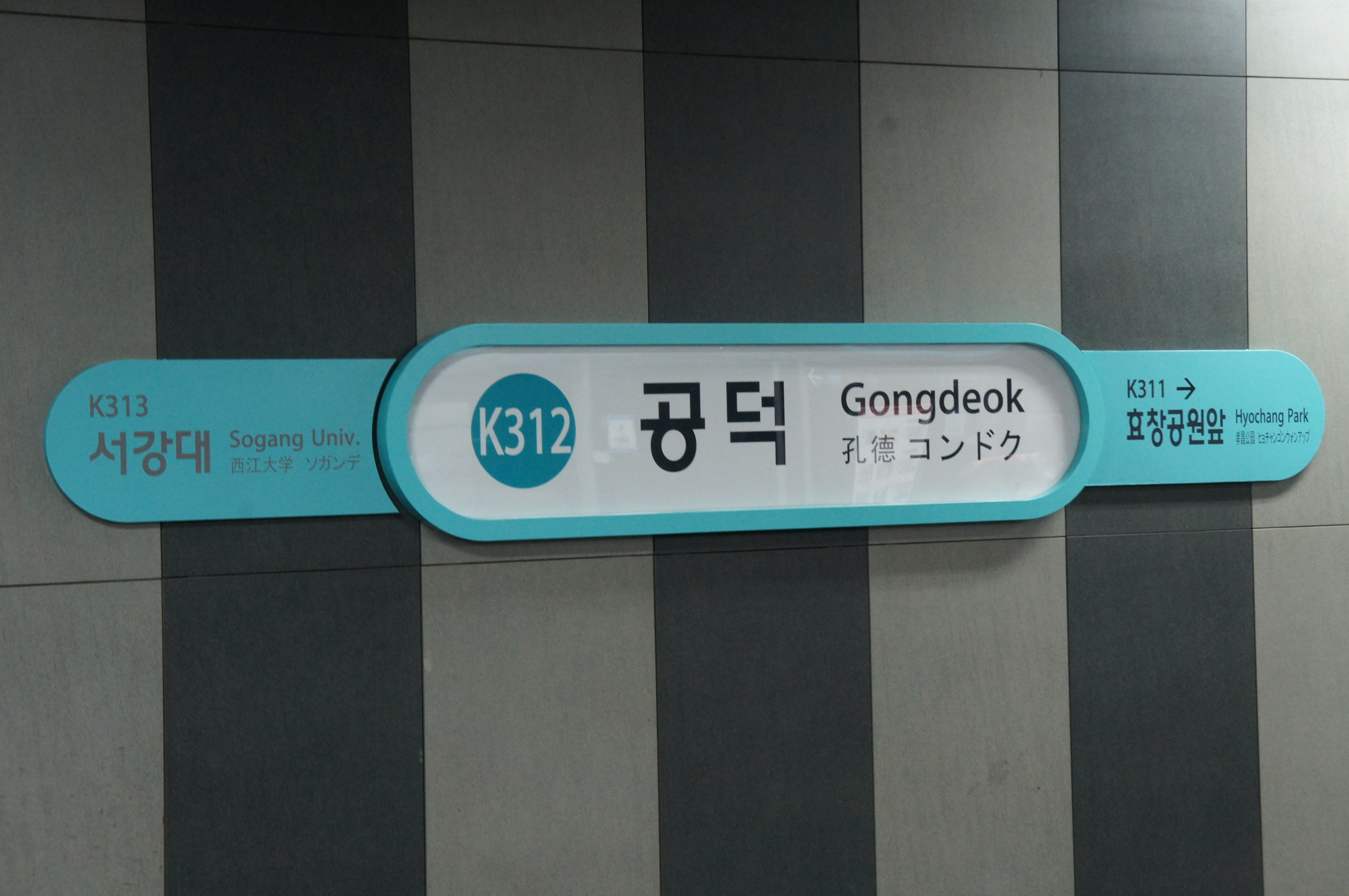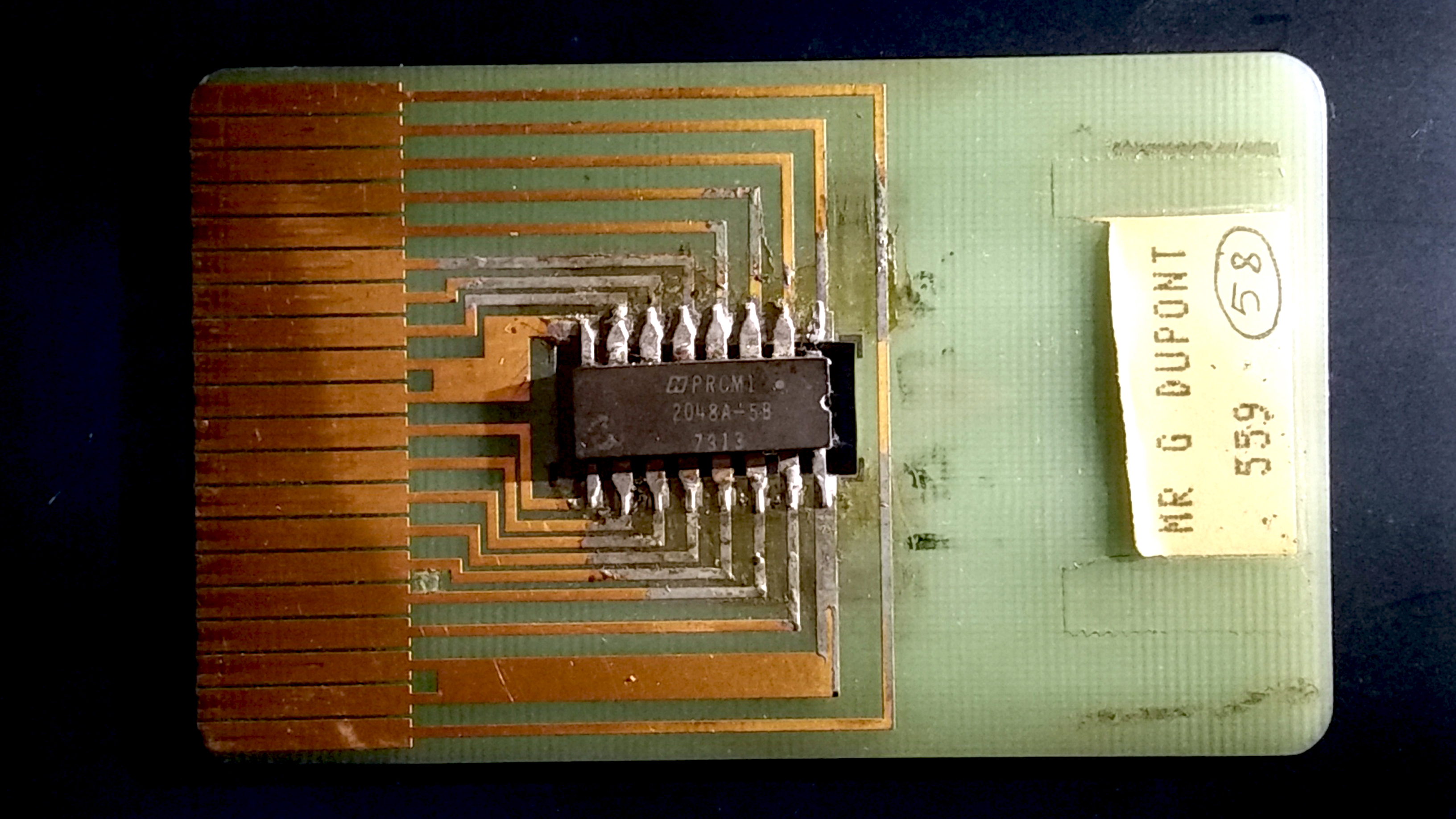|
Kōda Station (Aichi)
is a railway station in the town of Kōta, Aichi Prefecture, Japan, operated by Central Japan Railway Company (JR Tōkai). Lines Kōda Station is served by the Tōkaidō Main Line, and is located 318.5 kilometers from the starting point of the line at Tokyo Station. Station layout The station has a single island platform connected to the elevated station building by a footbridge. The station building has automated ticket machines, TOICA automated turnstiles and is unattended. Platforms Adjacent stations History Kōda Station began as on the Japanese Government Railway (JGR) Tōkaidō Line in April 1906. It was upgraded to become a full station and given its present name on September 11, 1908. The JGR became the JNR (Japan National Railway) after World War II. All freight operations were discontinued in 1971. With the privatization of the JNR on April 1, 1987, the station came under the control of JR Central. Automated turnstiles using the TOICA IC Card system came ... [...More Info...] [...Related Items...] OR: [Wikipedia] [Google] [Baidu] |
JR Logo (central)
JR, J. R. or Jr. may refer to: Arts and entertainment * '' J R'', a 1975 novel by William Gaddis * J. R. Ewing, a ''Dallas'' television character * JR Chandler, an ''All My Children'' television character * '' Jornal da Record'', a Brazilian news program * ''JR'', a 2001 punk album by Jim Bob * "Jr.", a 1992 song by Codeine on the album '' Barely Real'' People In arts and entertainment * JR (artist) (born 1983), French photographer and street artist * J.R. (musician) (born 1979), American Christian singer and producer * JR (rapper) (born 1987), South African rapper and entrepreneur * Jayam Ravi (born 1980), Indian actor * Jinyoung (entertainer, born 1994) (formerly ''Jr.''), South Korean singer of Got7 and JJ Project * Kim Jong-hyeon (born 1995; stage name: ''JR''), South Korean singer of NU'EST * J. R. Martinez (born 1983), American actor and soldier * Jim Ross (born 1952), American wrestling commentator * John Ruskin (1819–1900), English writer and art critic In ... [...More Info...] [...Related Items...] OR: [Wikipedia] [Google] [Baidu] |
TOICA
TOICA () is a rechargeable contactless smart card ticketing system for JR Central railway network which was introduced in the Chūkyō Area (Greater Nagoya) of Japan on November 25, 2006. The name is an abbreviation of " Tōkai IC Card". Like JR East's Suica or JR West's ICOCA, the card uses RFID technology developed by Sony known as FeliCa. As of December 2007, a year after launch, 350,000 cards had been issued, and 50% of riders (and 70% of commuter pass holders) in the Nagoya area used the card. By Spring 2023, 3.27 million cards had been issued. Since 2013, it has been part of Japan's Nationwide Mutual Usage Service, allowing it to be used in major cities across the country. Usable area As of 2022, TOICA is currently accepted on JR Central lines in the following area: *Tōkaidō Main Line, between Atami and Maibara (the whole line of JR Central operation) ** Includes branch between Ōgaki and Mino-Akasaka ** East of Atami and west of Maibara, stations are serve ... [...More Info...] [...Related Items...] OR: [Wikipedia] [Google] [Baidu] |
Railway Stations In Aichi Prefecture
Rail transport (also known as train transport) is a means of transport using wheeled vehicles running in tracks, which usually consist of two parallel steel rails. Rail transport is one of the two primary means of land transport, next to road transport. It is used for about 8% of passenger and freight transport globally, thanks to its energy efficiency and potentially high speed.Rolling stock on rails generally encounters lower frictional resistance than rubber-tyred road vehicles, allowing rail cars to be coupled into longer trains. Power is usually provided by diesel or electric locomotives. While railway transport is capital-intensive and less flexible than road transport, it can carry heavy loads of passengers and cargo with greater energy efficiency and safety. Precursors of railways driven by human or animal power have existed since antiquity, but modern rail transport began with the invention of the steam locomotive in the United Kingdom at the beginning of the 19th ... [...More Info...] [...Related Items...] OR: [Wikipedia] [Google] [Baidu] |
Station Numbering
Station numbering is a sign system which assigns station codes consisting of a few letters and numbers to train stations. It aims to facilitate navigation for foreign travelers not familiar with the local language by using globally understood characters ( Latin letters and Arabic numbers). The system is now in use by various railway companies around the world such as in mainland China, Indonesia, Japan, South Korea, Singapore, Taiwan, Thailand, and the United States. History Station numbering was first introduced—but to less fanfare—in South Korea, by the Seoul Metropolitan Subway in 1983 as a section of Seoul Subway Line 2 ( Euljiro 1-ga to Seongsu) was opened. Its first usage in Japan was in the Nagasaki Electric Tramway where it was introduced in May 1984."History of Nagasaki Electric Tramway line transition", ''Stadtbahn'' issue 9, April 1984 The Tokyo subway system introduced station numbering in 2004. Sports events are usually the turning point for the introduct ... [...More Info...] [...Related Items...] OR: [Wikipedia] [Google] [Baidu] |
IC Card
A smart card (SC), chip card, or integrated circuit card (ICC or IC card), is a card used to control access to a resource. It is typically a plastic credit card-sized card with an embedded integrated circuit (IC) chip. Many smart cards include a pattern of metal contacts to electrically connect to the internal chip. Others are contactless, and some are both. Smart cards can provide personal identification, authentication, data storage, and application processing. Applications include identification, financial, public transit, computer security, schools, and healthcare. Smart cards may provide strong security authentication for single sign-on (SSO) within organizations. Numerous nations have deployed smart cards throughout their populations. The universal integrated circuit card (UICC) for mobile phones, installed as pluggable SIM card or embedded eSIM, is also a type of smart card. , 10.5billion smart card IC chips are manufactured annually, including 5.44billion SIM card IC c ... [...More Info...] [...Related Items...] OR: [Wikipedia] [Google] [Baidu] |
Japanese Government Railway
The Japanese Government Railways (JGR) was the national railway system directly operated by the until 1949. It was a predecessor of Japanese National Railways and the later Japan Railways Group. Name The English name "Japanese Government Railways" was what the Ministry of Railways (established in 1920) used to call its own and sometimes the ministry itself as a railway operator. Other English names for the government railways include Imperial Japanese Government Railways and Imperial Government Railways, which were mainly used prior to the establishment of the ministry. This article covers the railways operated by the central government of Japan from 1872 to 1949 notwithstanding the official English name of the system of each era. Network By the end of World War II in 1945, the Japanese Government Railways operated on the main Japanese islands of Honshū, Hokkaidō, Kyūshū, Shikoku and Karafuto. The railways in Taiwan and Korea were operated by the local Governor-General ... [...More Info...] [...Related Items...] OR: [Wikipedia] [Google] [Baidu] |
Koda Station 101126
KODA (99.1 FM, "Sunny 99.1") is an American commercial adult contemporary-formatted radio station in Houston, Texas. The station is owned by iHeartMedia. Its studios and offices are located along the West Loop Freeway in Uptown Houston. KODA has an effective radiated power (ERP) of 100,000 watts. The Senior Road Tower transmitter is off Farm to Market Road 2234 near Fort Bend Parkway in Southwest Houston. KODA broadcasts in the HD Radio hybrid format, with its sister station KTRH simulcasting on KODA's HD2 subchannel. History On Christmas Eve, 1946, the station signed on as KPRC-FM. It was owned by the ''Houston Post'' daily newspaper, which also owned KPRC and would put KPRC-TV on the air in 1949. (When KPRC-AM signed on in May, 1925, the call letters stood for Kotton Port Rail Center, a slogan promoting Houston commerce.)Houston Post, May 10, 1925 In its early years, KPRC-FM mostly simulcast its AM sister station. KPRC-FM began broadcasting on 99.7 MHz until 194 ... [...More Info...] [...Related Items...] OR: [Wikipedia] [Google] [Baidu] |
Turnstile
A turnstile (also called a gateline, baffle gate, automated gate, turn gate in some regions) is a form of gate which allows one person to pass at a time. A turnstile can be configured to enforce One-way traffic#One-way traffic of people, one-way human traffic. In addition, a turnstile can restrict passage only to people who insert a coin, ticket, transit pass, security credential, or other method of payment or verification. Modern turnstiles can incorporate biometrics, including retina scanning, fingerprints, and other individual human characteristics which can be scanned. Thus a turnstile can be used in the case of Fare control, paid access (sometimes called a faregate or ticket barrier when used for this purpose), for example to access public transport, a pay toilet, or to restrict access to authorized people, for example in the lobby of an office building. History Turnstiles were originally used, like other forms of stile, to allow human beings to pass while excluding live ... [...More Info...] [...Related Items...] OR: [Wikipedia] [Google] [Baidu] |
Ticket Machine
A ticket machine, also known as a ticket vending machine (TVM), is a vending machine that produces paper or electronic tickets, or recharges a stored-value card or smart card or the user's mobile wallet, typically on a smartphone. For instance, ticket machines dispense train tickets at railway stations, transit tickets at metro stations and tram tickets at some tram stops and in some trams. Token machines may dispense the ticket in the form of a token which has the same function as a paper or electronic ticket. The typical transaction consists of a user using the display interface to select the type and quantity of tickets and then choosing a payment method of either cash, credit/debit card or smartcard. The ticket(s) are then printed on paper and dispensed to the user, or loaded onto the user's smartcard or smartphone. Ticket and fare formats For most of the twentieth century, ticket machines issued paper tickets, or tokens worth one fare each. Later, fare value was lo ... [...More Info...] [...Related Items...] OR: [Wikipedia] [Google] [Baidu] |
JR Central
is the main railway company operating in the Chūbu (Nagoya) region of central Japan. It is officially abbreviated in English as JR Central and occasionally as JR Tokai (). The term ''Tōkai'' refers to the southern portion of Central Japan, the geographical region in which the company chiefly operates. JR Central's operational hub is Nagoya Station and the company's administrative headquarters are located in the JR Central Towers above the station. The busiest and longest railway line operated by JR Central is the Tōkaidō Main Line between and . The company also operates the Tōkaidō Shinkansen between and . Additionally it is responsible for the Chūō Shinkansen — a maglev service between Tokyo and Osaka, which is due to start operation between Tokyo and Nagoya in 2034. JR Central is Japan's most profitable and highest throughput high-speed-rail operator, carrying 138 million high-speed-rail passengers in 2009, considerably more than the world's largest airlin ... [...More Info...] [...Related Items...] OR: [Wikipedia] [Google] [Baidu] |




